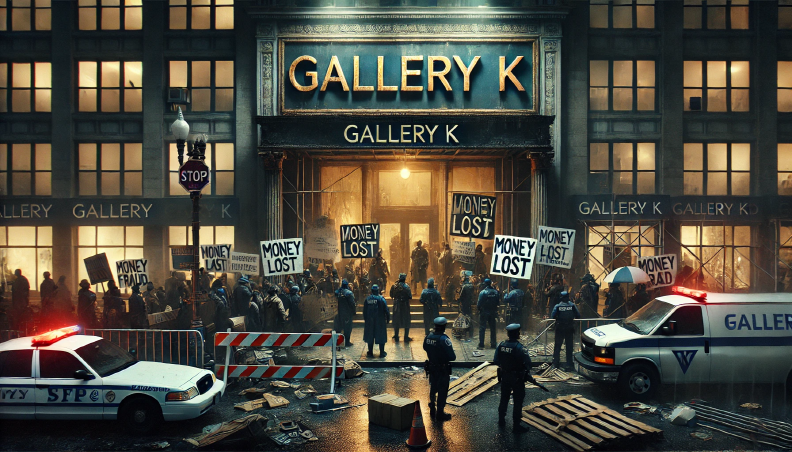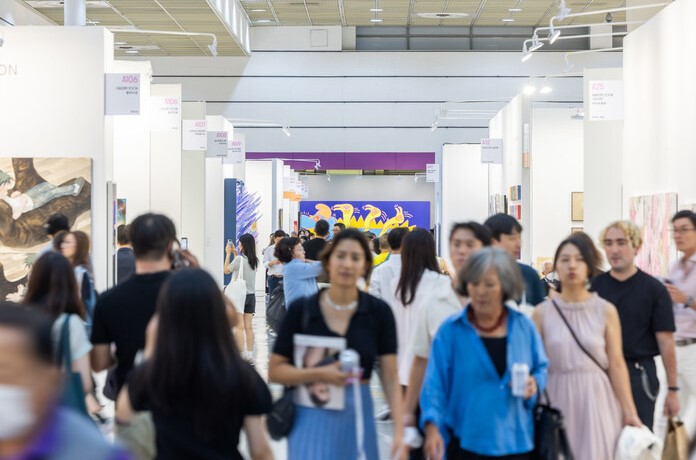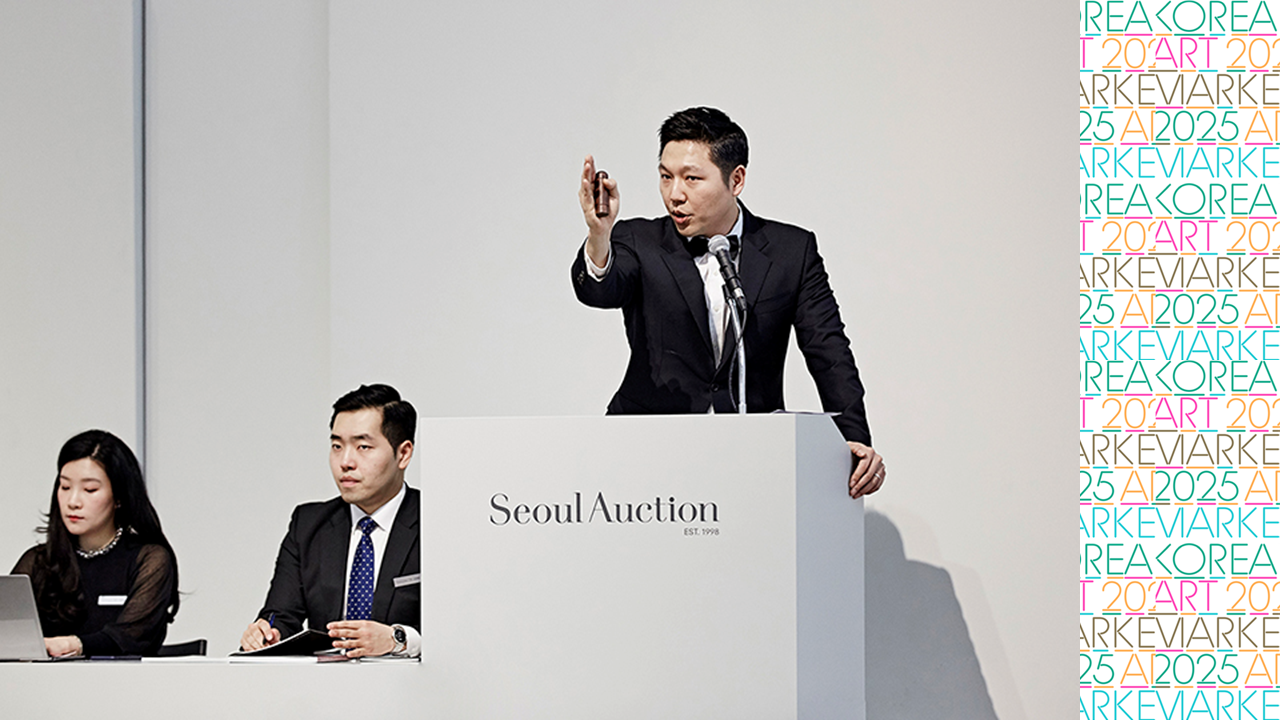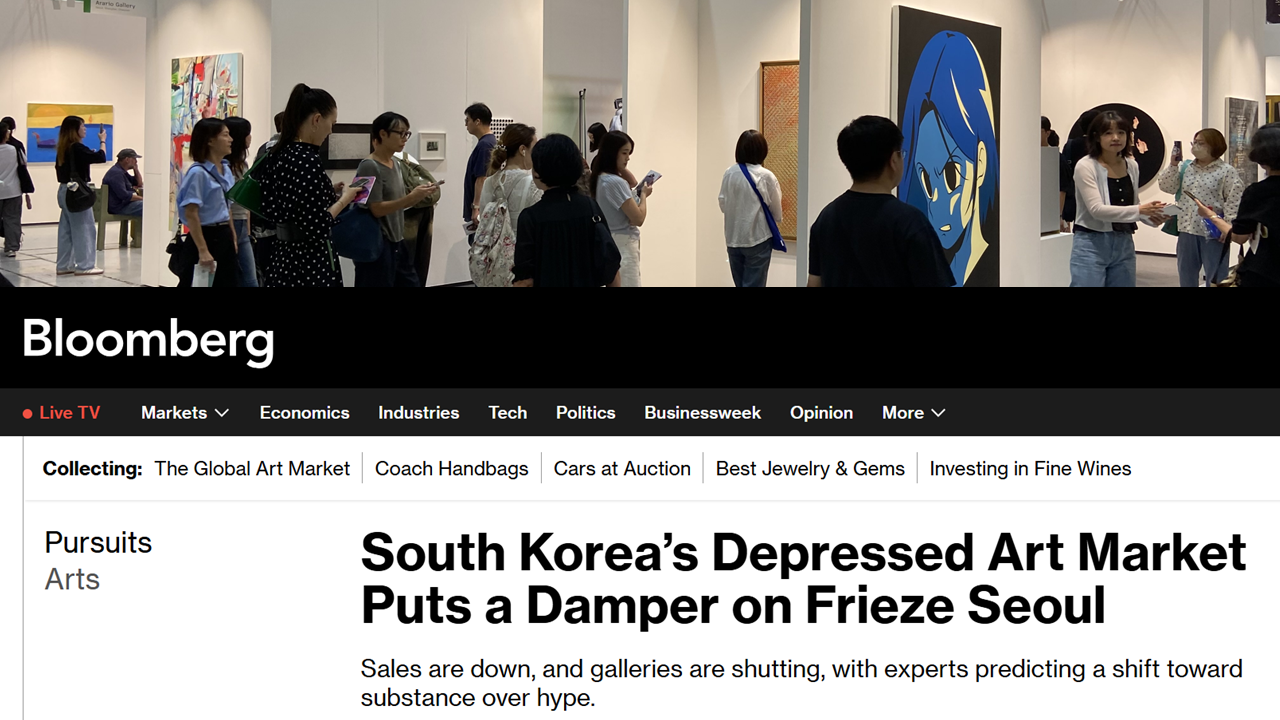“Open run” is a term used in Korea to express a situation where people wait in a long line before a store opens to rush in and buy something. Despite the COVID-19 outbreak, the term was mentioned frequently in the luxury goods market where strong sales happened among young consumers. This situation is also happening in the art market.
There were reports of people bringing folding chairs to wait in the long queue to enter the Galleries Art Fair, an art fair held last month in Seoul, and people bringing tents to sleep out to purchase artworks at a gallery in Pyeongchang-dong, Seoul. The situation in Busan was no different. There was also a long line formed at the Busan Annual Market of Art (BAMA), an art fair in Busan city, with more than 100,000 visitors, twice as many as in previous years.
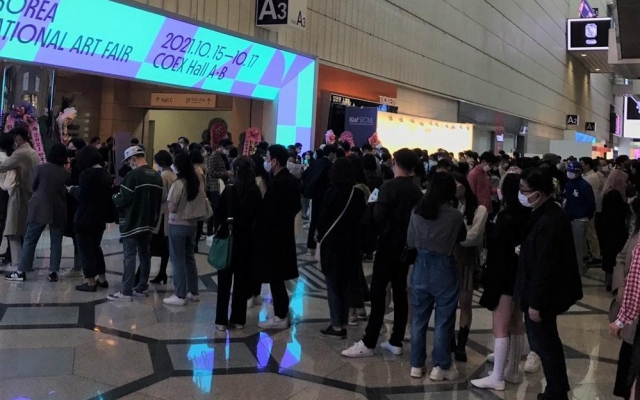
A long queue formed in front of the entrance of KIAF 2021, COEX, Seoul. Oct 13, 2021 – Oct 17, 2021. Photo by Aproject Company.
The majority of the people who are participating in forming these long lines are young collectors in their twenties and thirties. Collectors in their forties and fifties were considered the main collector base, but these younger collectors are now showing strong interest in art collecting, transforming the collectors’ landscape.
Consumers in their twenties and thirties view art as social and investment values. These young collectors prefer to have new experience and create connection with others through contemporary art. They also tend to consider art as a promising investment asset.

People lined up outside Print Bakery, Seoul. Photo by Jeong Sanghyeok. ©Chosun Media
Unlike the older collector group, younger collectors put more interest in discovering peer artists or the next rising stars instead of buying blue-chip works of art. This is because they are able to form relationships with the artists through social media and able to share similar sentiments through their artworks.
Also, the works by emerging artists has different price ranges, which give art collectors various options, and have the potential to gradually increase prices over time as their reputation evolves.
To attract the attention of these younger generations, various industries are entering the art market. The department store industry was one of the first to respond to this change in the younger people’s interests as they have been rapidly growing as the largest consumer base in the luxury goods market.
The department store industry has been expanding its activities into the art market by actively investing in auction companies, opening art galleries, and holding various art events in their venues

Installation view of "Dreaming Peace with Artist MeME" at the Blue Roof Lounge at L7 Hongdae by Lotte, Seoul. © Lotte Hotel
The younger generation’s strong interest in collecting art has also brought changes to the landscape of the hotel industry. Due to the COVID-19 outbreak, the number of foreigners visiting Korea and business guests has sharply decreased, but visitors in their twenties and thirties have been filling the empty rooms. The hotel industry said that these younger consumers filled in more than 70 percent of their accommodations during the past couple of years.
To provide new experiences tailored to the tastes of this new consumer group, the hotel industry is focusing on attracting and retaining the attention of these younger people through art marketing.
A hotel in Gangnam launched an NFT art gallery project, and another hotel held a pop-up art exhibition in their hotel lobby with the works of an emerging pop artist. Also, there is a hotel that has collaborated with the National Museum of Modern and Contemporary Art (MMCA) to release package products, and some others are opening gallery spaces in collaboration with art-related companies.

Seoul. Photo by Ping Onganankun on Unsplash.
This art market boom has resulted in numerous art fairs and auctions with record sales results. And the size of the Korean art market has grown from 329.1 billion KRW in 2020 to more than 900 billion KRW in 2021.
Many experts are expecting this recent growth in the art market to last for a long time because compared with older collectors who usually run shorter in purchasing art, younger generations are in the long run and leading the art market.
However, some other market watchers are concerned that the current art boom among the younger generation is more toward investments than collecting. This can result in increasing demand for certain artworks, creating market bubbles, which make it harder to collect artworks in depth. This may result in a bubble breaking when the market shrinks and collectors realize the price of the artwork has become detached from its true value.
In order for the art market to maintain its growth, it is important for young collectors to develop a collecting taste through continuous interest in the artists they prefer and to understand the importance of an artist’s reputation not only in the market but also for their aesthetic value.
Yet the stable and positive growth of the art market is not achieved solely through the efforts of collectors. Experts explain that every part of the artwork should be engaged to create a strong art market. There should be enough artists with potentials to develop an ongoing practice, dealers and galleries who can discover these young artists, and art institutions to educate the public.















